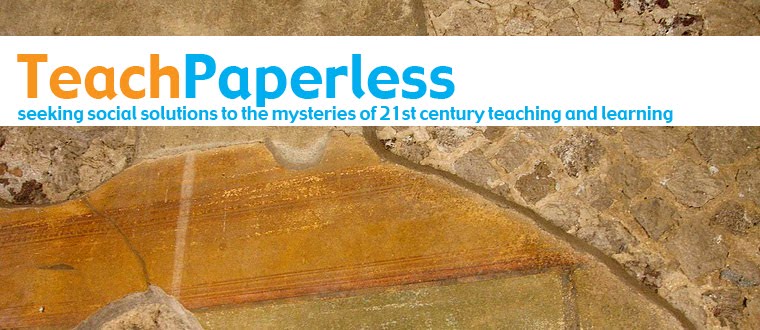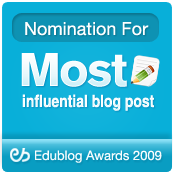Wednesday, January 19, 2011
Getting Students and Teachers Organized - tips and resources
GET ORGANIZED!!
I just saw a Tweet asking for tips on helping students to get organized, so I decided to write some tips up. I am a very organized person (type A personality and was an engineer for ten years) and I used to teach organizational skills to other employees at one of my jobs. There are a ton of different organizational methods out there, but it is actually pretty easy to be organized and stay that way using some free tools.
I use a variety of tools to keep myself organized and share them with other teachers and with my students. I have some links below to other articles I've written that are similar in nature, so please read those too.
Since this blog is about Teaching Paperless, I will deal with electronic apps and devices.
The trick to being organized is to always use your system and not deviate from it. Take 5 min each morning, lunch, afternoon, and evening to get organized, check your schedule and task list, and make plans for the next time period. Keep your task list and schedule up to date and check it before making plans. Prioritize your task list based on what is most important or needed done 1st. Use a calendar or prompts or reminders to make sure you get things done on time.
Electronic organizing tools can be helpful because they can remind you of due dates, meetings, etc. through text messages, emails, and on-screen alerts. They can also link notes, web sites, and more together so it's easier to find things.
Here is how I stay organized:
1. I have a Palm Pre+ running on Verizon so I can access all of the tools I use at any time. That means I'm always able to take notes, create a task or calendar event, and review all of my stuff any time, anyplace. I can access all of my emails, my Google Calendar, Google Task List, and Evernote from it. I can also access all of my files via Dropbox. (and all of this is accessible from any computer and always in sync).
2. I use iGoogle to keep everything in one place on my computer. My calendar, Tasks, email, and Evernote notes are all available to me on one page on my computer. This means I can see everything very easily and keep myself up to date. I also have events in Google Calendar set up to send me a text message reminder.
(here's an article I wrote about using iGoogle to stay organized. )
3. I use Evernote to take notes, organize notes, organize info and web clippings, and as a lesson planning tool. I have access to this from any computer and from my Palm Pre+. I organize notes into notebooks and also have tags, making them easier to find when I need them.
4. I even have an app for my phone that will alert me when I am near a place that I have a task for (via GPS).
I tell my students about all of these, and I also share some great tools specifically for students, like Trackclass, Shoshiku, and Dweeber that can help them get organized with their classes, schedule, and notes.
Electronic Planning Resources (free)
Smartphones can access Evernote and web sites and many have their own organizing apps.
iGoogle (and other Google Tools)
Student Planner Sotware (all free) (lots of good ones here to share with your students)
(Palm PDA's and Smartphones (not the Pre or Pixi) came with Palm Desktop which was a great way to be organized on the computer and sync to your PDA or Palm OS smartphone)
Not necessarily Free
Microsoft Outlook (free if your school uses Microsoft Exchange for email) there is web access.
Outlook Express used to come with Windows. Windows Live now offers much of same functionality.
Fee (not free)
Franklin Covey has electronic planning solutions (more well known for Paper Planners)
PlanPlusOnline is pretty powerful and is accessible from any smartphone. But, it's $14.95/month.
Organizing Resources
Get Organized Now - great site with great tips and resources
Julie Morgenstern - professional organizer with some great tips and resources
The big thing to remember is that you have to use your system consistently and you have to take a time to plan out your day. You have to prioritize things and realize that free time and sleep sometimes have to take a back seat to priorities. However, if you plan things well and do things each day, you can avoid the sudden backlog and all-nighters that many students end up experiencing.
Basic Steps for being organized:
1. Plan Ahead (every day)
2. Make a ToDo (or task) list
3. Put things in your calendar (and check your calendar during your planning)
4. Students: write down your assignments and due dates in organizer
5. Students: study/work on homework a little each day to stay ahead
6. Stick to your schedule and commitments
7. Reward yourself with some free time.
Teachers and students can benefit greatly form being organized. You are more efficient, get things done on time, don't forget things, and generally have less stress.
Subscribe to:
Post Comments (Atom)








No comments:
Post a Comment
Note: Only a member of this blog may post a comment.